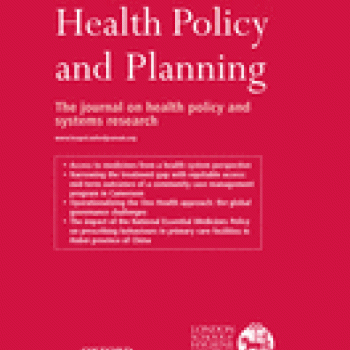Publication Information

The World Health Organization estimates that almost half of all premature deaths among 15-19 year olds can be attributed to injuries with most (95%) fatal injuries occurring in low and middle-income countries. Yet the evidence-base for adolescent injuries in low-income countries is poor. This paper uses a mixed method approach to gain an understanding of patterns, causes and consequences of unintentional injuries among adolescents aged between 14 and 16 years in four low-income country settings. Survey data collected in 2009 in Ethiopia, India (Andhra Pradesh), Peru and Vietnam (from approximately 900 adolescents in each country) were integrated with qualitative research (conducted between 2007 and 2011) with a nested sample of older cohort children in Ethiopia (n=25) and India (n=25) using an iterative process. Logistic regression models were fitted to examine potential risk factors for injuries. Injuries were a concern for adolescents in all countries and occurred during work, recreation and sports, or transportation. Being male was associated with an increased risk for all types of injuries, whereas being poor was only significantly associated with work injuries. Area of residence (urban versus rural) made a difference in some countries and for some kinds of injuries as did perceived health status. Qualitative findings highlight the consequences of injuries for the adolescents but also for the social and economic status of the entire household. Injury prevention programmes need to be specific to cultural and environmental settings, expectations of adolescent's responsibilities and responsive to the context of poverty.
Keywords: adolescent health, injury, accidents, low income, youth
2-4 key messages:
Adolescent injuries in low income countries can have social and economic consequences for both the individual and the wider family unit that cannot be captured in epidemiological data alone. Qualitative data supplement and extend quantitative adolescent injury data where hospitalisation records are poor, and where individuals may not seek or have access to medical treatment. The social determinants of adolescent injuries must be considered as part of prevention efforts, particularly the issues of poverty, infrastructure, cultural understandings of causation, and access to appropriate treatment to prevent secondary complications.
The final published version of the article is available on the journal website.

The World Health Organization estimates that almost half of all premature deaths among 15-19 year olds can be attributed to injuries with most (95%) fatal injuries occurring in low and middle-income countries. Yet the evidence-base for adolescent injuries in low-income countries is poor. This paper uses a mixed method approach to gain an understanding of patterns, causes and consequences of unintentional injuries among adolescents aged between 14 and 16 years in four low-income country settings. Survey data collected in 2009 in Ethiopia, India (Andhra Pradesh), Peru and Vietnam (from approximately 900 adolescents in each country) were integrated with qualitative research (conducted between 2007 and 2011) with a nested sample of older cohort children in Ethiopia (n=25) and India (n=25) using an iterative process. Logistic regression models were fitted to examine potential risk factors for injuries. Injuries were a concern for adolescents in all countries and occurred during work, recreation and sports, or transportation. Being male was associated with an increased risk for all types of injuries, whereas being poor was only significantly associated with work injuries. Area of residence (urban versus rural) made a difference in some countries and for some kinds of injuries as did perceived health status. Qualitative findings highlight the consequences of injuries for the adolescents but also for the social and economic status of the entire household. Injury prevention programmes need to be specific to cultural and environmental settings, expectations of adolescent's responsibilities and responsive to the context of poverty.
Keywords: adolescent health, injury, accidents, low income, youth
2-4 key messages:
Adolescent injuries in low income countries can have social and economic consequences for both the individual and the wider family unit that cannot be captured in epidemiological data alone. Qualitative data supplement and extend quantitative adolescent injury data where hospitalisation records are poor, and where individuals may not seek or have access to medical treatment. The social determinants of adolescent injuries must be considered as part of prevention efforts, particularly the issues of poverty, infrastructure, cultural understandings of causation, and access to appropriate treatment to prevent secondary complications.
The final published version of the article is available on the journal website.

